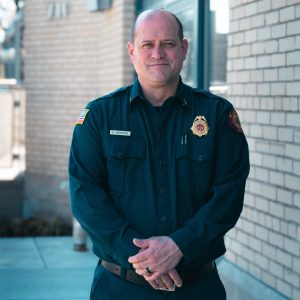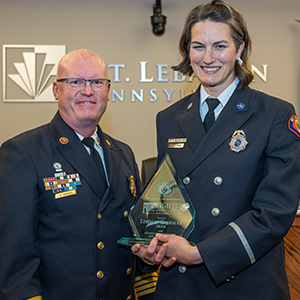Alerting others to hidden disabilities

Several years ago, Tessa Watkins watched a TikTok content creator explain the importance of the sunflower lanyard they donned around their neck.
The lanyard, part of the Hidden Disabilities Sunflower Program, was meant to alert people that they had a hidden disability. With this knowledge, the people they came in contact with could respond appropriately.
Watkins, Royce Avenue, a web developer who uses the pronouns they/them, immediately thought, “I need this in my life.”
“I have several invisible disabilities and conditions, one of them being anxiety, so it was easy for me to visualize a hypothetical scenario in which I could run the errands I needed to run without fear that people would perceive me in negative ways or approach me unnecessarily, putting me in anxiety-inducing situations,” Watkins said.
The Hidden Disabilities Sunflower Program originated in the United Kingdom. The lanyard is a simple tool for someone to voluntarily share that they have a hidden disability. Simply by wearing the sunflower, you’re letting everyone know that you might need extra help, understanding, or just more time.
Many airports are registered agencies to distribute the lanyards. The sunflower was chosen as the symbol for the organization “to reflect the idea of confidence, growth and strength, as well as introducing happiness and positivity,” according to its website. The goal for the program was to “encourage inclusivity, acceptance and understanding” for those with a hidden disability.
Still, it took Watkins more than two years to get a lanyard. After that, it became their mission to ensure the lanyards are readily available to others in the area.
“Even though it seems like their focus is on transportation and airports specifically, I’m disabled all the time, not just when I travel,” Watkins said. “My vision for this project is to see it everywhere.”
They tried various routes, but ultimately brought a lanyard to a Mt. Lebanon Commission meeting in January.
“Honestly, I was expecting a ‘Thanks for your time,’ response and then no follow-up,” they said. “I was so surprised at how excited everyone was, especially our fire chief, Nick Sohyda, who took on the project immediately and signed us up.”
Sohyda saw the importance of the program and wanted to bring it to Mt. Lebanon.
Sunflower lanyards are now available in several locations in Lebo, including the Mt. Lebanon Public Safety Center, 555 Washington Road; the municipal building, 710 Washington Road; and the Mt. Lebanon Public Library, 16 Castle Shannon Boulevard.
Those with hidden disabilities are encouraged to ask staff at these locations for a lanyard.
“When you see one, you’re supposed to approach the person and say, ‘Is there something that I can do to assist you?’” Sohyda said of how staff should proceed in the future.
Watkins was “overwhelmed” by the response, in a good way.
Bringing the program to Mt. Lebanon, their goal is multifaceted.
“To proudly wear my lanyard and have it understood everywhere I go. To know that anyone in our community and surrounding areas can visit an easy-to-access location and pick one up for themselves or a friend or family member, that they don’t have to wait for years like I did,” Watkins said.
Watkins continues to wear the lanyard and spread the word about the program across the community, speaking with local businesses and handing them out to families.
“I’ve really enjoyed getting to meet families of all flavors in this kind of advocacy, too.”





